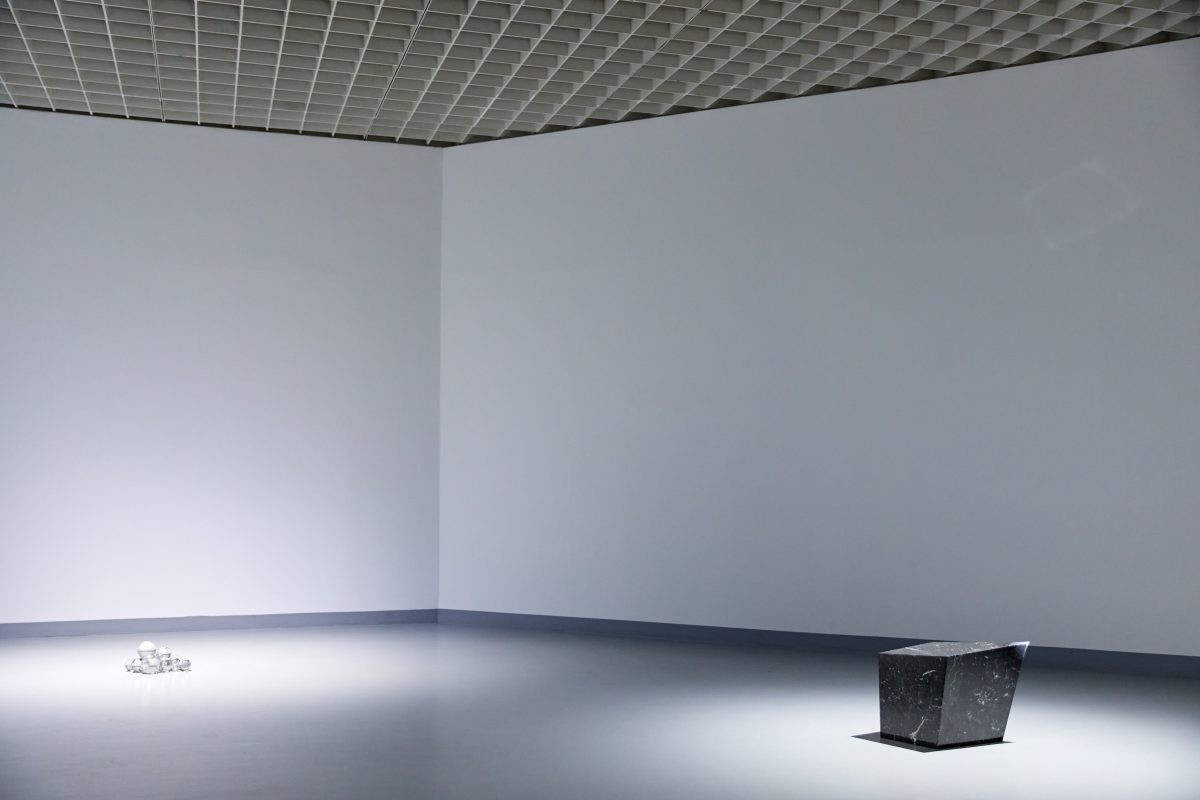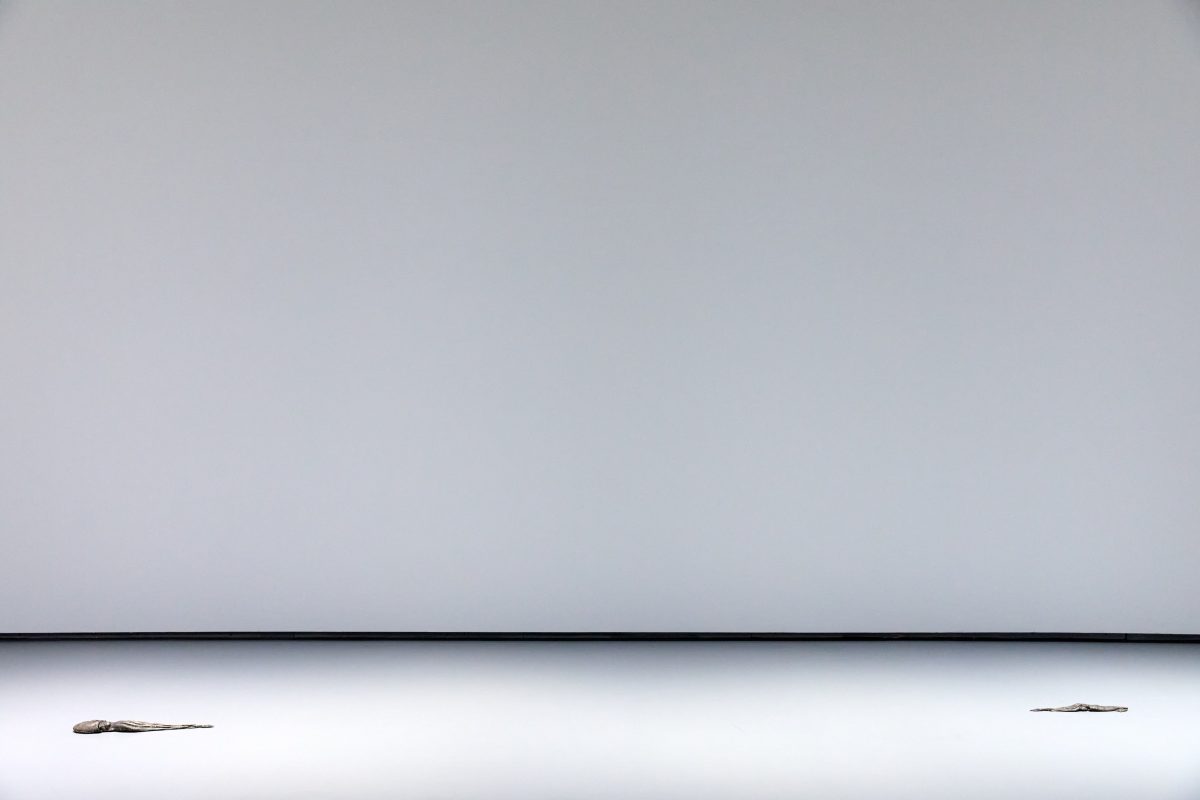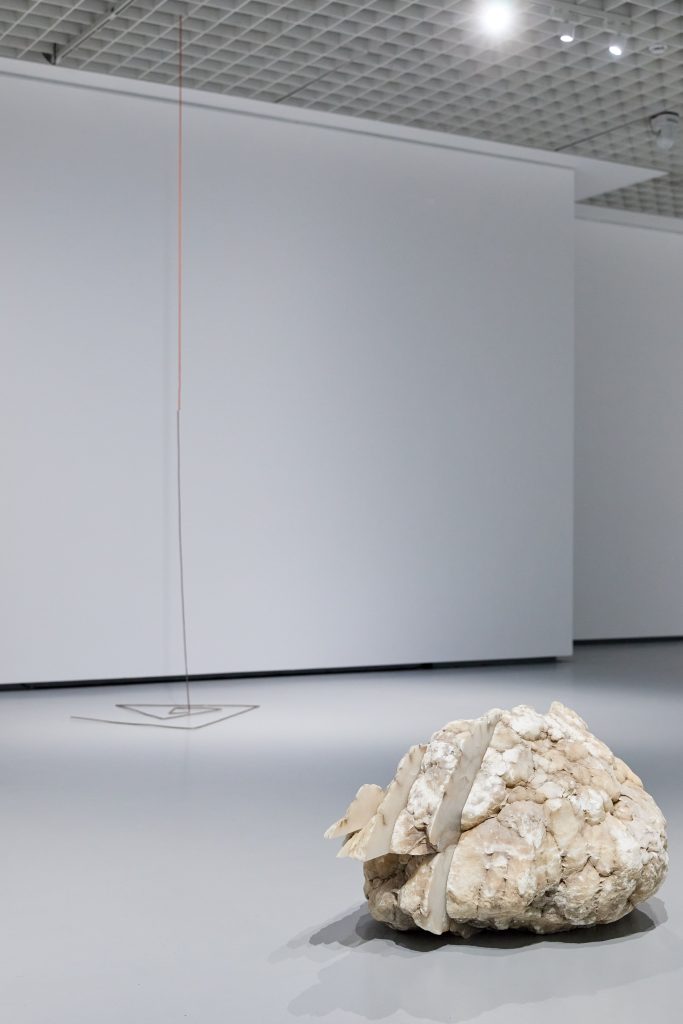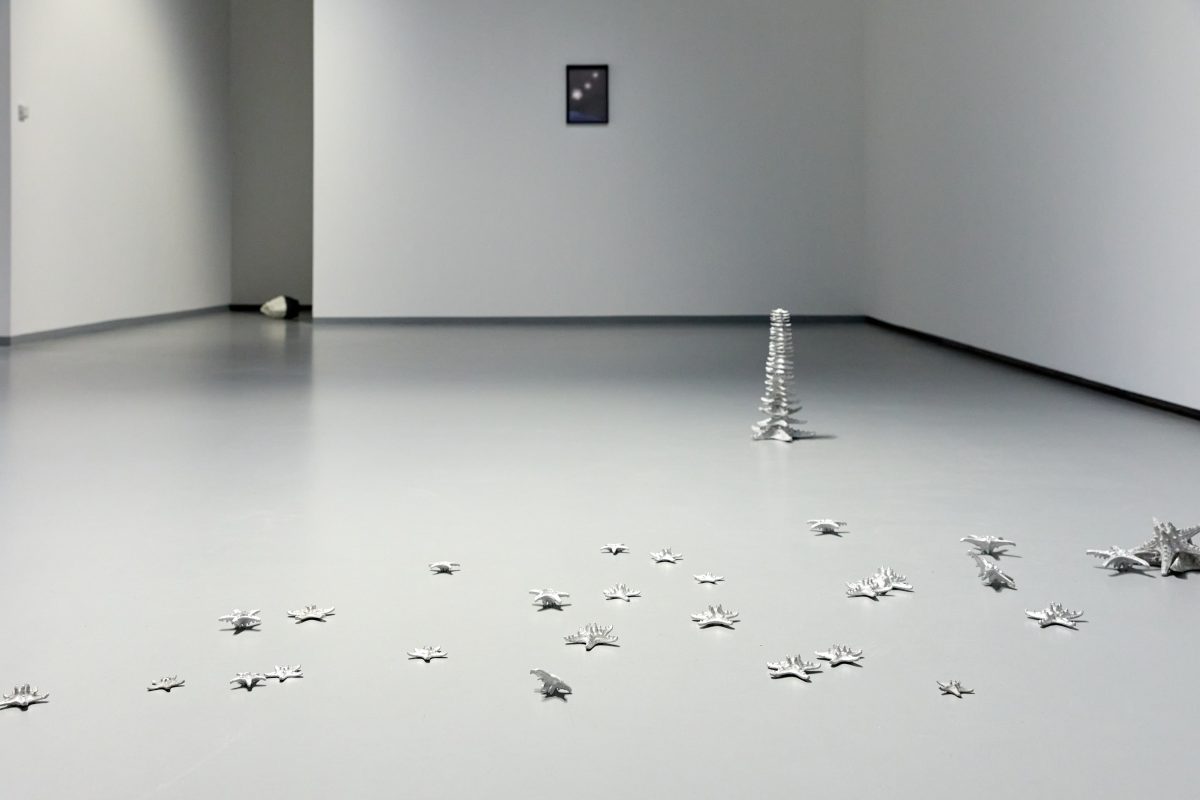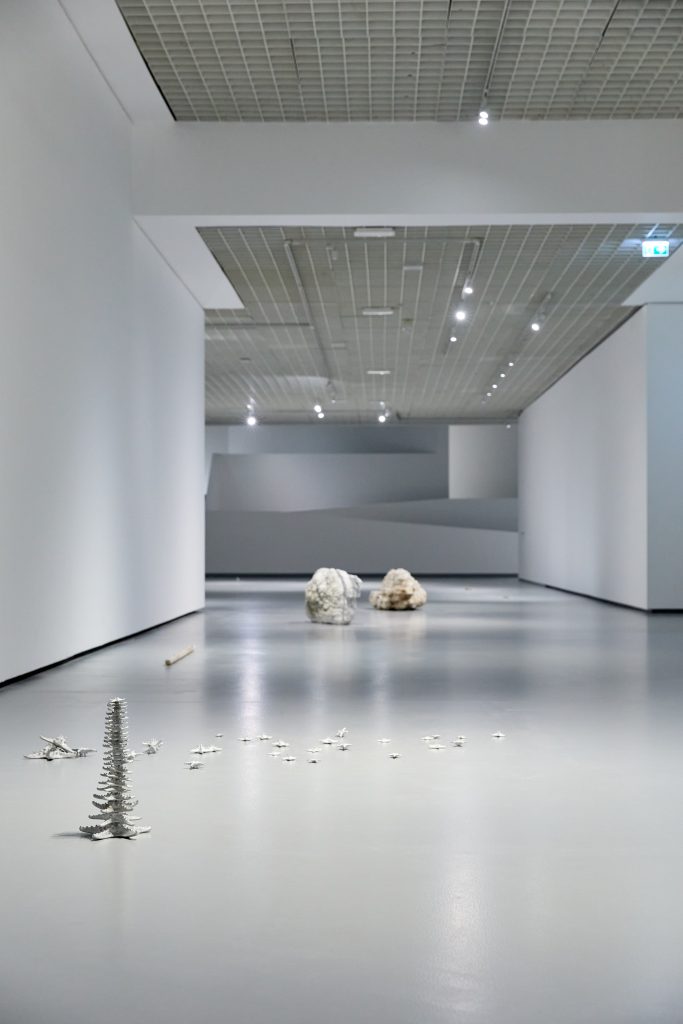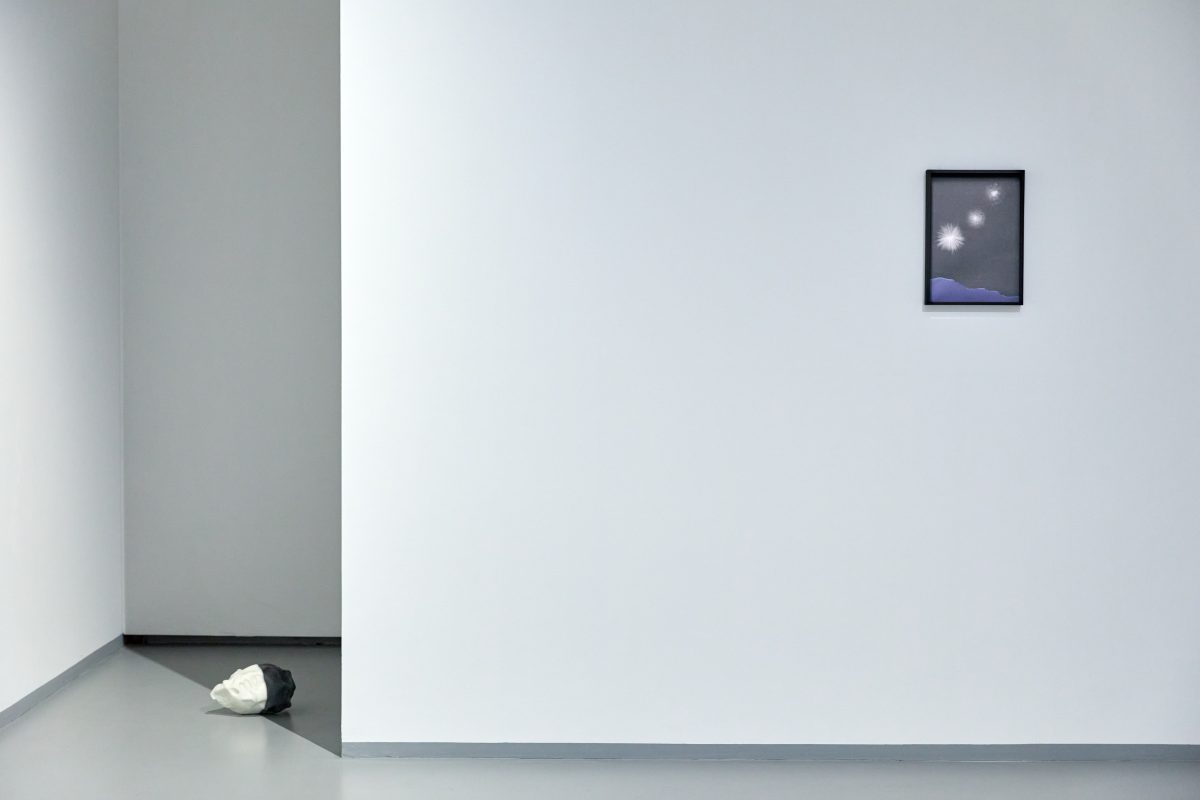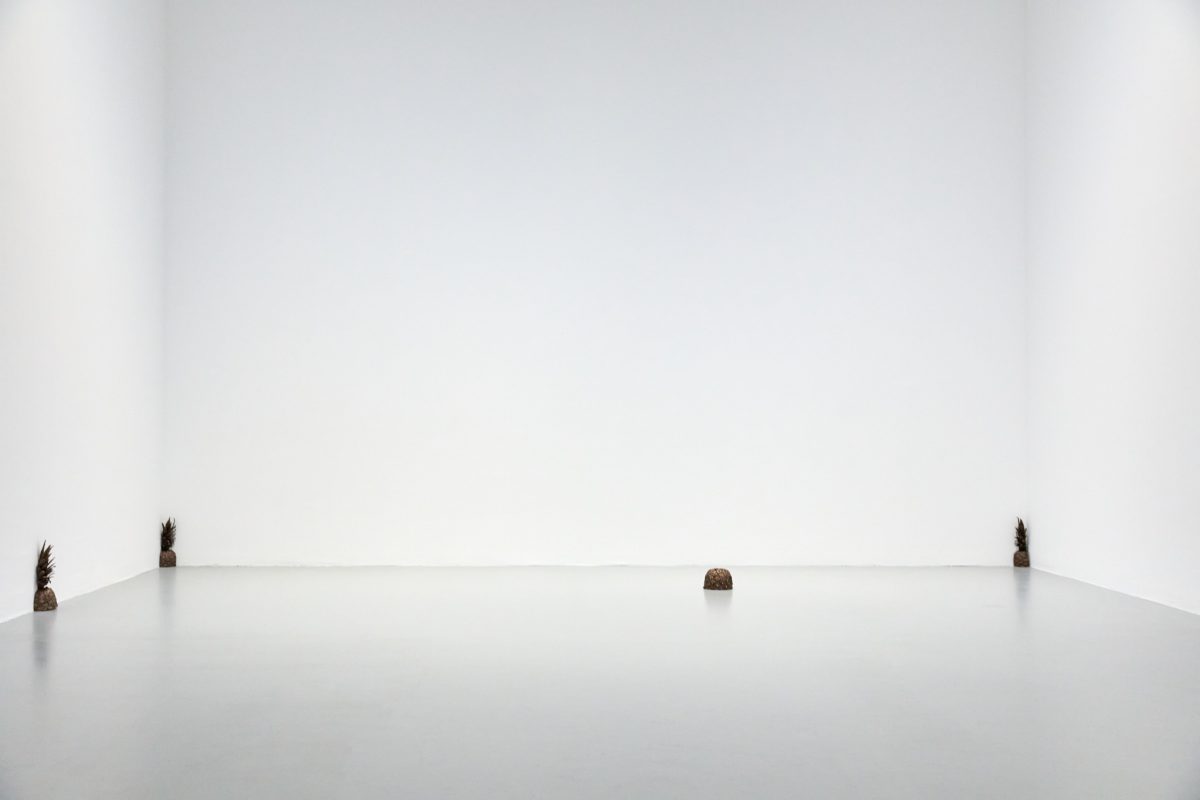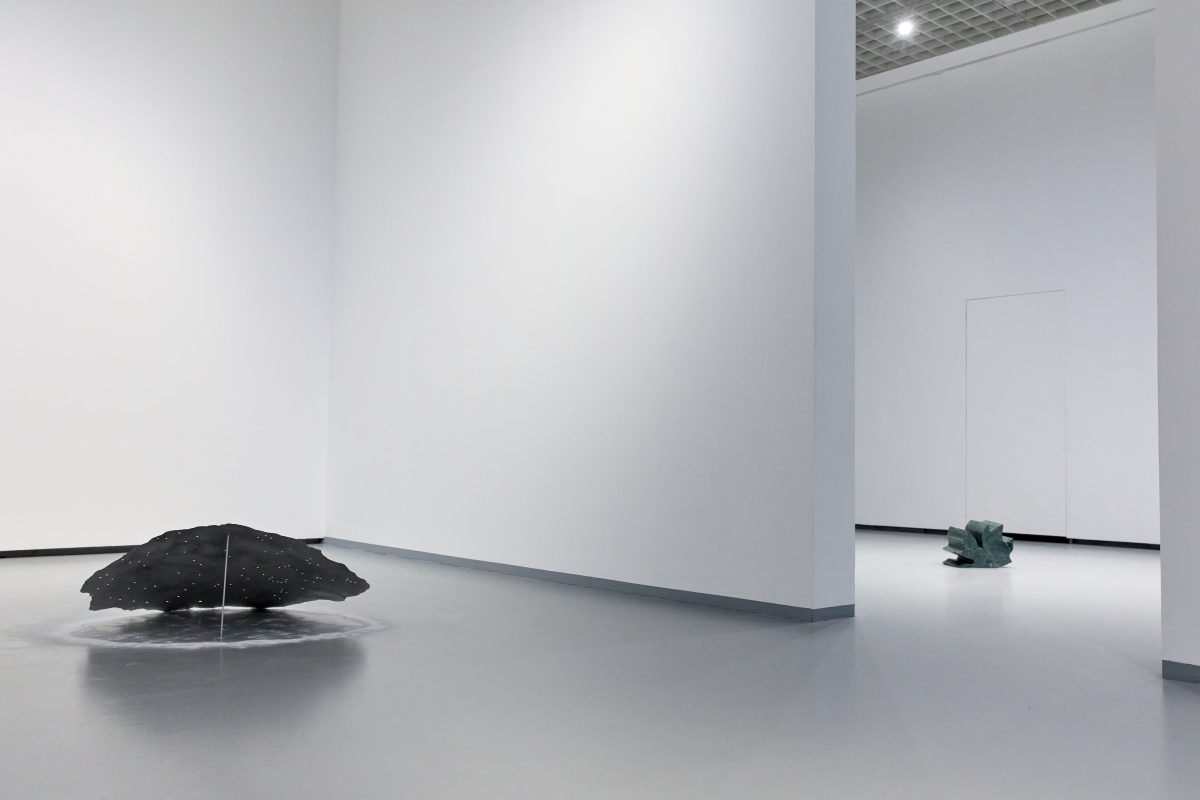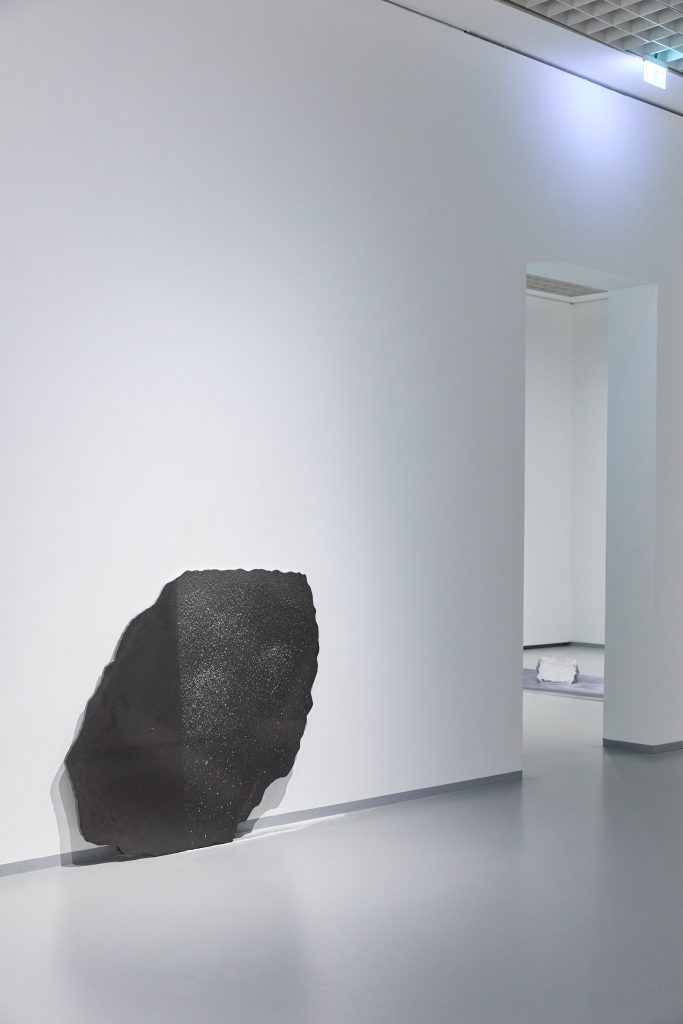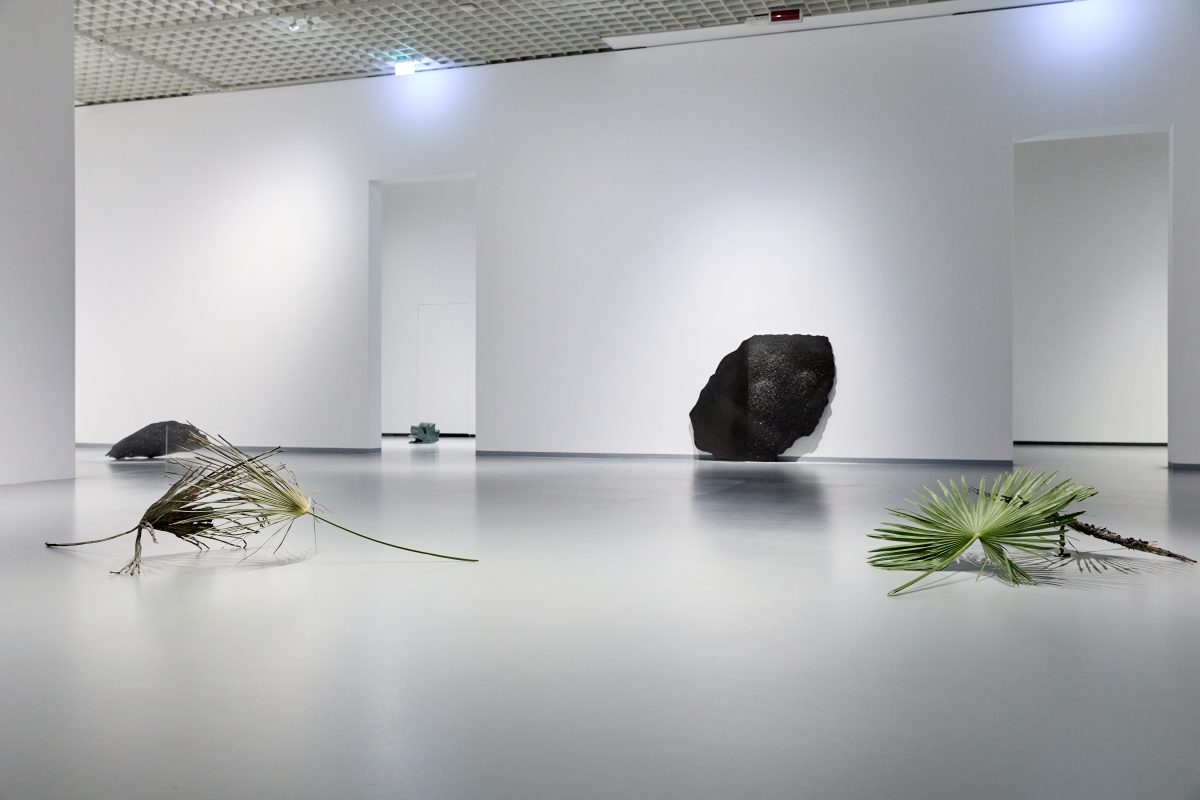
- This event has passed.
Gianni Caravaggio. Per analogiam
curated by Elena Volpato
GAM is happy to present the anthological exhibition of Gianni Caravaggio, whose work has been part of the museum’s collection since 2001. The exhibition consists of a nucleus of works created over a period of almost thirty years, from 1995 to the present. Five new works have been produced for the occasion.
One of these, a black marble leaf, entitled Quando nessuno mi vede(When nobody sees me), has been placed in the museum’s garden, in the shade of a bush. Within the museum itself, it is echoed by a green marble sculpture, mirroring the first, entitled Alla luce del sole(In daylight). Other works respond to each other along the way, drawing relationships and mirror images.
What emerges from the exhibition as a whole is the evocative power of the works and images which, in presenting themselves, always also refer back to further images and further meanings. The thought that recognises such cross-references is a thought per analogiam, by analogy, where every form is also a metaphor and where in every grain of matter one can recognise inscribed the emblem of the whole. Thought by analogy finds the memory of the infinite in the finite and the presence of what is above usin the smallest reality: among the works, visitors will find a cloth laid on the ground, a black blanket embroidered with white stars, arranged in a precise order. Their arrangement repeats the position of the constellations above Turin on 31 October at six o’clock in the evening, the day and time of the opening. Visitors will thus find themselves included in a perfect mirror image between the microcosm of embroidery and the sky above the museum.
The exhibition dedicated to the work of Gianni Caravaggio is the third in a cycle devoted to the work of Italian artists, each time juxtaposed with certain poetic reflections. The first exhibition in 2021 dealt with the thought of contradiction in a collective of five artists. The second considered metamorphic thinking, in the exhibition Hic sunt dracones of 2022, in a dialogue between an artist and a collective. In this solo exhibition, thinking by analogy is emphasised.
“In all these exhibitions, the area for reflection has been suggested by the expressive fabric of the exhibited works. We avoided presenting collectives of many artists to ensure that the theme did not overlap like an over-determined interpretative grid, but that it was the individual voice of the works that specified the paths of thought,” writes Elena Volpato. “Contradiction, metamorphosis and analogy are three territories of the indefinite that since its birth, philosophy has tried to expunge as aberrant forms, contrary to logic, rationality and deductive scientific thought, relegating them to the space of myth, symbolic and pre-scientific imagination. However, they represent not only some of the most natural processes by which the human mind gives meaning to the experience of the world, but are the very birthplace of poetic and artistic expression. In this sense, the paths developed in the three exhibitions are neither ‘themes’ nor ‘content’. They are the essential core of the nature of what we call art, whose authenticity lies in the forms of excess of meaning, in a beyond of meaning that goes beyond the plane of literal reality. The work of art lives in that space of expression that is ineffable yet necessary, and it is there that any reading or attempt at interpretation must try to encounter it.”
The exhibition is accompanied by the publication of a catalogue by Corraini Edizioni, with texts by Gianni Caravaggio, Elena Volpato and Federico Ferrari.
We would like to thank the Fondazione Guido ed Ettore De Fornaris and the Fondazione per l’Arte Moderna e Contemporanea CRT that have acquired some important works by Gianni Caravaggio for the GAM collection in recent years.
a cura di Elena Volpato
La GAM è felice di presentare la mostra antologica di Gianni Caravaggio, entrato a far parte della collezione del museo sin dal 2001. L’esposizione si compone di un nucleo di opere realizzate nell’arco di quasi trent’anni di lavoro, dal 1995 ad oggi. Cinque nuove opere sono state prodotte per l’occasione.
Una di queste, una foglia di marmo nero, intitolata Quando nessuno mi vede, è stata collocata nel giardino del museo, all’ombra di un cespuglio. All’interno le fa eco una scultura di marmo verde, speculare alla prima, intitolata Alla luce del sole. Altre opere si rispondono l’un l’altra nel percorso, tracciando relazioni e rispecchiamenti.
Dall’intera mostra emerge il potere evocativo delle opere e delle immagini che, nel presentare se stesse, rimandano sempre anche a ulteriori immagini e ad ulteriori significati. Il pensiero che riconosce tali rimandi è il pensiero per analogiam, dove ogni forma è anche metafora e dove in ogni granello di materia si può riconoscere inscritto l’emblema del tutto. Il pensiero per analogia trova nel finito la memoria dell’infinito e nella più piccola realtà la presenza di quanto ci sovrasta: i visitatori troveranno tra le opere un panno posato a terra, una coperta nera ricamata di stelle bianche, disposte in un preciso ordine. Il loro disegno ripeterà la posizione delle costellazioni sopra Torino il 31 ottobre alle sei della sera, giorno e orario di inizio dell’inaugurazione. I visitatori si troveranno così inclusi in un perfetto rispecchiamento tra il microcosmo del ricamo e il cielo sopra il museo.
La mostra dedicata all’opera di Gianni Caravaggio è la terza di un ciclo rivolto al lavoro di artisti italiani, di volta in volta accostato ad alcune riflessioni di poetica. La prima esposizione del 2021 trattò il pensiero dalla contraddizione in una collettiva di cinque artisti. La seconda ha considerato il pensiero metamorfico, nella mostra Hic sunt dracones del 2022, in un dialogo tra un’artista e un collettivo. In questa personale si evidenzia il pensiero per analogia.
“In tutte queste esposizioni il piano della riflessione è stato suggerito dal tessuto espressivo delle opere esposte. Si è evitato di presentare delle collettive di molti artisti per far sì che il tema non si sovrapponesse come una griglia interpretativa sovradeterminata, ma fosse la voce individuale delle opere a precisare i percorsi del pensiero. – scrive Elena Volpato – Contraddizione, metamorfosi e analogia sono tre territori dell’indefinito che la filosofia, sin dalla sua nascita, ha cercato di espungere come forme aberranti, contrarie alla logica, alla razionalità e al pensiero scientifico deduttivo, relegandole allo spazio del mito, dell’immaginazione simbolica e prescientifica. Rappresentano però, non solo alcuni dei processi più naturali con cui la mente umana dà senso all’esperienza del mondo, ma sono il terreno stesso di nascita dell’espressione poetica e artistica. In questo senso, i percorsi sviluppati nelle tre esposizioni non sono né “temi” né “contenuti”. Sono il nucleo essenziale della natura di quanto chiamiamo arte, la cui autenticità sta nelle forme di eccedenza del senso, in un oltre del significato che supera il piano della realtà letterale. L’opera d’arte vive in quello spazio dell’espressione che è ineffabile eppure necessario ed è lì che ogni lettura o tentativo di interpretazione dovrà provare ad incontrarla.”
La mostra è accompagnata dalla pubblicazione di un catalogo di Corraini Edizioni, con scritti di Gianni Caravaggio, Elena Volpato e Federico Ferrari.
Si ringraziano la Fondazione Guido ed Ettore De Fornaris e la Fondazione per l’Arte Moderna e Contemporanea CRT che hanno acquisito negli anni passati alcune importanti opere di Gianni Caravaggio per la collezione della GAM

